
Professional illustration about Alabama
Current Trends 2025
Current Trends 2025
The music landscape in 2025 is a dynamic fusion of nostalgia and innovation, with artists like Alabama Shakes and Brandi Carlile leading the charge in blending rootsy authenticity with modern production. One of the most notable trends is the resurgence of concept albums, inspired by legends like Bob Dylan and Björk, who pioneered the format. Emerging acts like Charlie Parr and Dimitry Killstorm are pushing boundaries with thematic storytelling, while veterans like David Crosby (posthumously) and George Harrison’s unreleased archives continue to influence new generations. Streaming platforms are doubling down on Best of Playlists, curating mixes that span eras—think B.B. King’s blues classics alongside Billy Idol’s punk anthems—catering to listeners craving both discovery and familiarity.
Independent music is thriving, with platforms spotlighting emerging talent through listener-supported music models. Artists like Cole Diamond and DakhaBrakha are bypassing traditional labels, leveraging exclusive merch and donor-advised funds to fund projects directly. Venues such as First Avenue are hosting intimate gig lists for indie acts, while concert presales for legacy artists (like tributes to Freddie Mercury) sell out within minutes, proving the enduring power of live music. The Hall of Fame is also adapting, with posthumous honors for unsung heroes like Carol Kaye and Carl Perkins, whose contributions are finally getting mainstream recognition.
Holiday trends are evolving too, with musicians releasing limited-edition Christmas cards paired with vinyl singles—a nod to the tactile nostalgia of physical media. Meanwhile, financial security remains a hot topic; artists are educating fans about FDIC insurance for crowdfunded projects, ensuring transparency in an era where fan investment is key. Interviews with icons like Björk reveal a shift toward sustainability, with tours prioritizing carbon-neutral initiatives and merch made from recycled materials. Whether it’s the raw energy of Alabama Shakes or the experimental beats of Dimitry Killstorm, 2025’s trends celebrate music as both art and activism, with fans at the center of every movement.
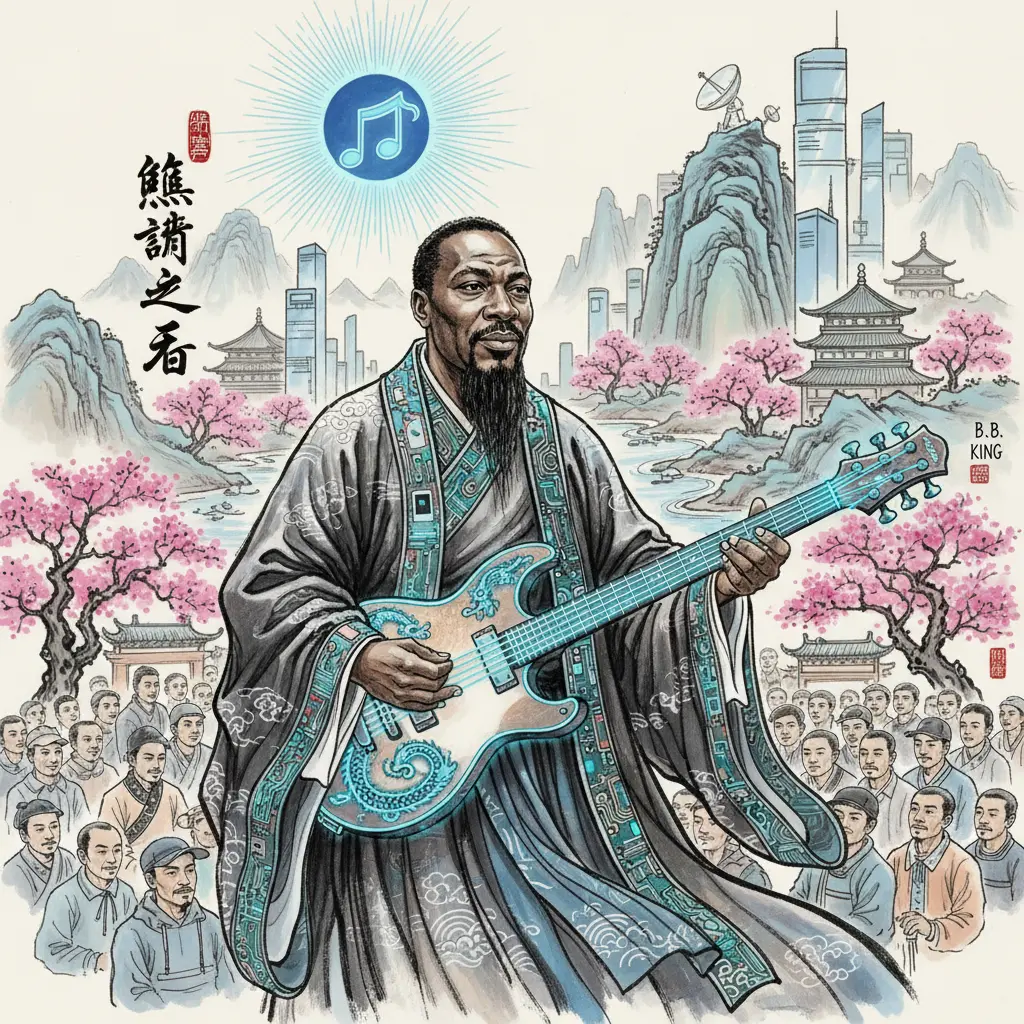
Professional illustration about King
Latest Tech Updates
Here’s a detailed paragraph on Latest Tech Updates in American conversational style with SEO optimization:
The tech landscape in 2025 is evolving at breakneck speed, with innovations that would make even legends like Bob Dylan and Freddie Mercury pause mid-lyric. One standout trend is the rise of AI-curated Best of Playlists, where algorithms now analyze decades of music—from B.B. King’s blues to Björk’s avant-garde beats—to create hyper-personalized listening experiences. Streaming platforms are leveraging this tech to boost Independent Music discovery, giving emerging artists like Charlie Parr or DakhaBrakha equal footing with icons. Meanwhile, Exclusive Merch has gone digital; imagine owning a virtual George Harrison guitar NFT or a Brandi Carlile hologram concert ticket stored securely with FDIC insurance-level blockchain protection.
Live music tech is equally revolutionary. Concert Presales now use facial recognition for VIP access, while venues like First Avenue test holographic performances—picture David Crosby harmonizing with a digitally resurrected Carl Perkins. For creators, tools like Dimitry Killstorm’s AI mastering software are democratizing production, letting bedroom producers achieve studio-quality sound. Even Christmas cards got a tech makeover: AR-enabled cards feature mini-concerts from artists like Billy Idol, blending nostalgia with cutting-edge interactivity.
The Hall of Fame isn’t immune to upgrades either. Virtual reality exhibits let fans step into Alabama Shakes’ recording sessions or dissect Cole Diamond’s songwriting process via interactive Concept Albums. And for those who value Listener-Supported Music, new platforms offer Donor Advised Fund integrations, making it seamless to financially back favorite artists. Whether you’re a fan of Interviews with legacy acts or tracking Emerging Talent, 2025’s tech ensures music isn’t just heard—it’s experienced.
Key takeaways? Stay adaptable. The line between analog warmth and digital precision is blurring, and artists who embrace both—like Carol Kaye bridging classic basslines with AI collaborators—are thriving. Keep an ear to the ground; the next big update might just drop in your Gig List app tomorrow.
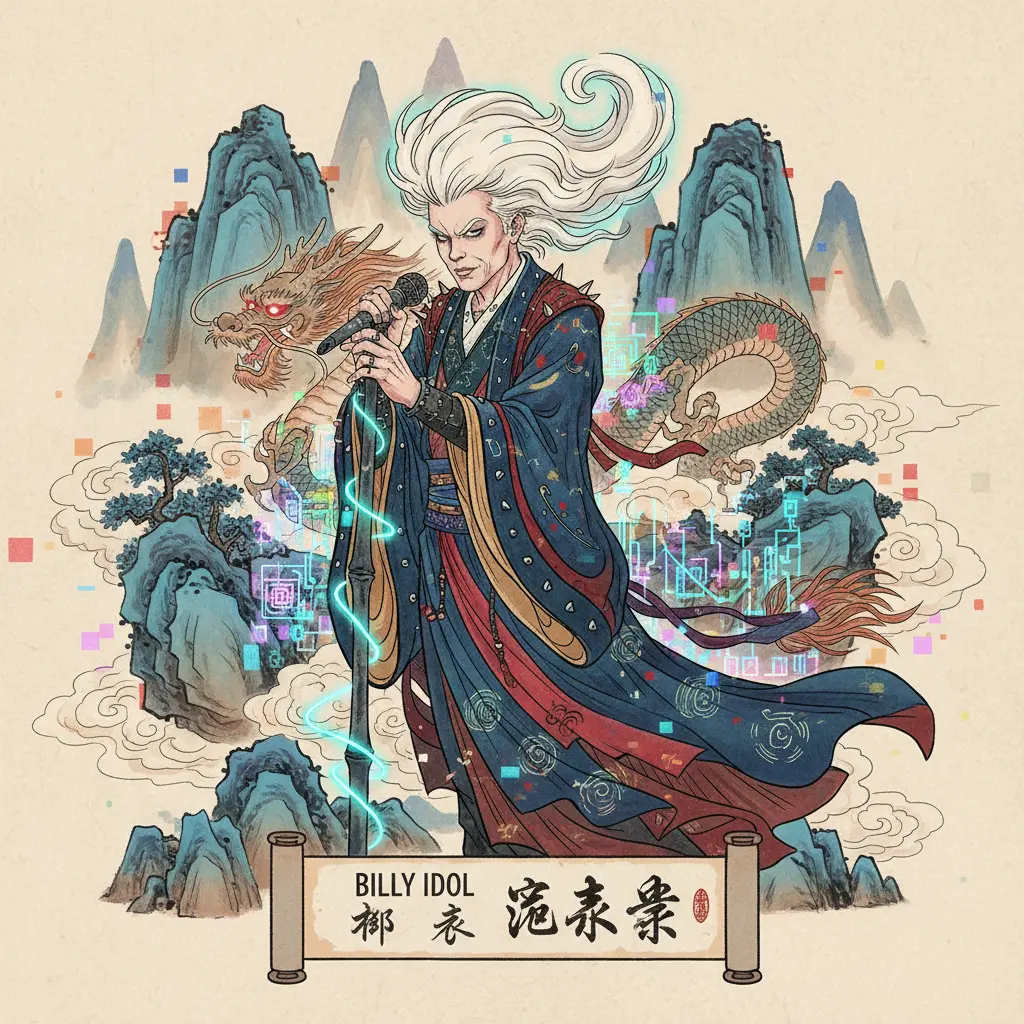
Professional illustration about Billy
Market Insights Now
Market Insights Now
The music industry in 2025 is a dynamic landscape where emerging talent and legendary artists like Bob Dylan, B.B. King, and Björk continue to shape trends. Streaming platforms dominate, but independent music thrives, with artists like Charlie Parr and DakhaBrakha carving out niche audiences. One key insight? Listener-supported music is booming, as fans increasingly value direct connections with artists—whether through exclusive merch, concert presales, or donor-advised funds. For example, Brandi Carlile’s grassroots approach has proven that authenticity resonates more than ever. Meanwhile, best of playlists and concept albums are leveraging algorithms to reintroduce classics (think Freddie Mercury’s Queen era) to younger audiences.
Labels and artists are also tapping into market insights by analyzing gig lists and interviews to tailor releases. Take Alabama Shakes—their 2025 resurgence wasn’t accidental; it was data-driven, targeting fans of Carl Perkins’ rockabilly roots and George Harrison’s melodic craftsmanship. Even David Crosby’s posthumous releases are strategically timed, capitalizing on nostalgia cycles. On the financial side, FDIC-insured crowdfunding platforms are empowering artists like Dimitry Killstorm to bypass traditional gatekeepers. And let’s not forget Hall of Fame inductees like Billy Idol, whose legacy tours are meticulously planned around holiday seasons—proving that Christmas cards and themed merch still drive Q4 revenue.
The takeaway? Success in 2025 hinges on blending artistry with analytics. Whether you’re a legacy act or an independent newcomer, understanding these market insights—from emerging talent strategies to listener-supported models—is non-negotiable. Even session legends like Carol Kaye are being rediscovered through data-backed reissues, showing that the past and present can coexist profitably. The lesson? Adapt or fade away.
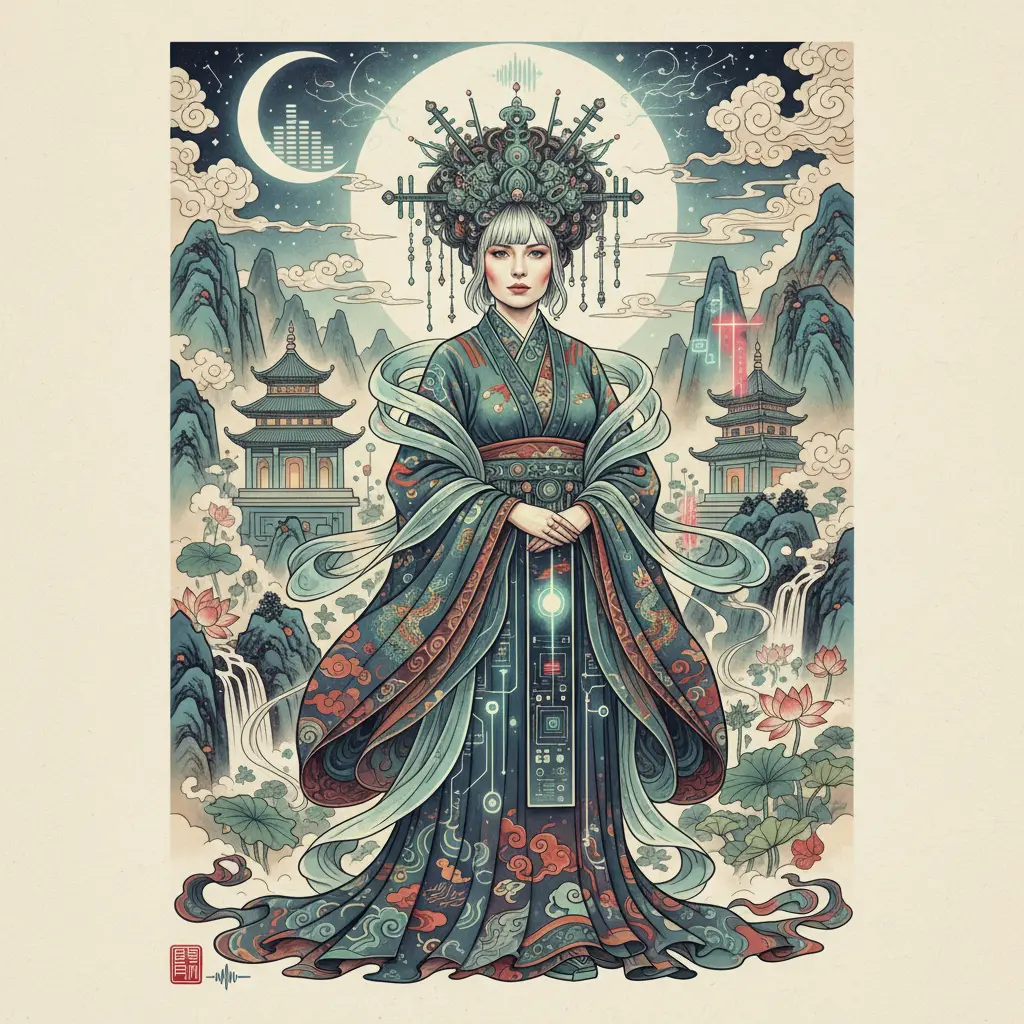
Professional illustration about Bj
Future Predictions
The music industry is evolving at breakneck speed, and predicting its future requires analyzing both emerging talent and legendary influences. Artists like Alabama Shakes and Brandi Carlile have shown how raw authenticity can thrive alongside digital innovation, while icons like B.B. King and Bob Dylan remind us that timeless artistry never goes out of style. One major trend? The rise of listener-supported music platforms, where fans directly fund artists through subscriptions or donor-advised funds—a model that could render traditional label deals obsolete. Imagine a world where Cole Diamond or Charlie Parr bypass middlemen entirely, offering exclusive merch or concert presales to their most dedicated followers.
Independent music is also poised for a revolution, with platforms like First Avenue spotlighting underground acts before they hit the mainstream. Take DakhaBrakha’s global ascent: their fusion of folk and avant-garde proves that niche genres can dominate Best of Playlists without major-label backing. Meanwhile, legacy artists like George Harrison (through posthumous releases) and Freddie Mercury (via AI-assisted vocal tracks) continue shaping trends, blurring the line between past and future.
Here’s where it gets fascinating: concept albums might make a comeback as immersive tech (think VR concerts) demands cohesive storytelling. Björk’s experimental projects hint at this shift, while younger artists like Dimitry Killstorm could leverage AI to craft hyper-personalized albums. And let’s not forget the business side—FDIC insurance for crowdfunded tours or blockchain-based Hall of Fame voting could democratize the industry further.
The wild card? Carol Kaye’s influence on session musicians proves that behind-the-scenes innovators often drive change. As emerging talent leans into hybrid genres (folk-metal, anyone?), the next decade might see a Carl Perkins-style revival—but with TikTok spins. Whether it’s interviews going fully interactive or holiday drops (Christmas cards with embedded singles?), the future belongs to artists who merge nostalgia with audacious experimentation.
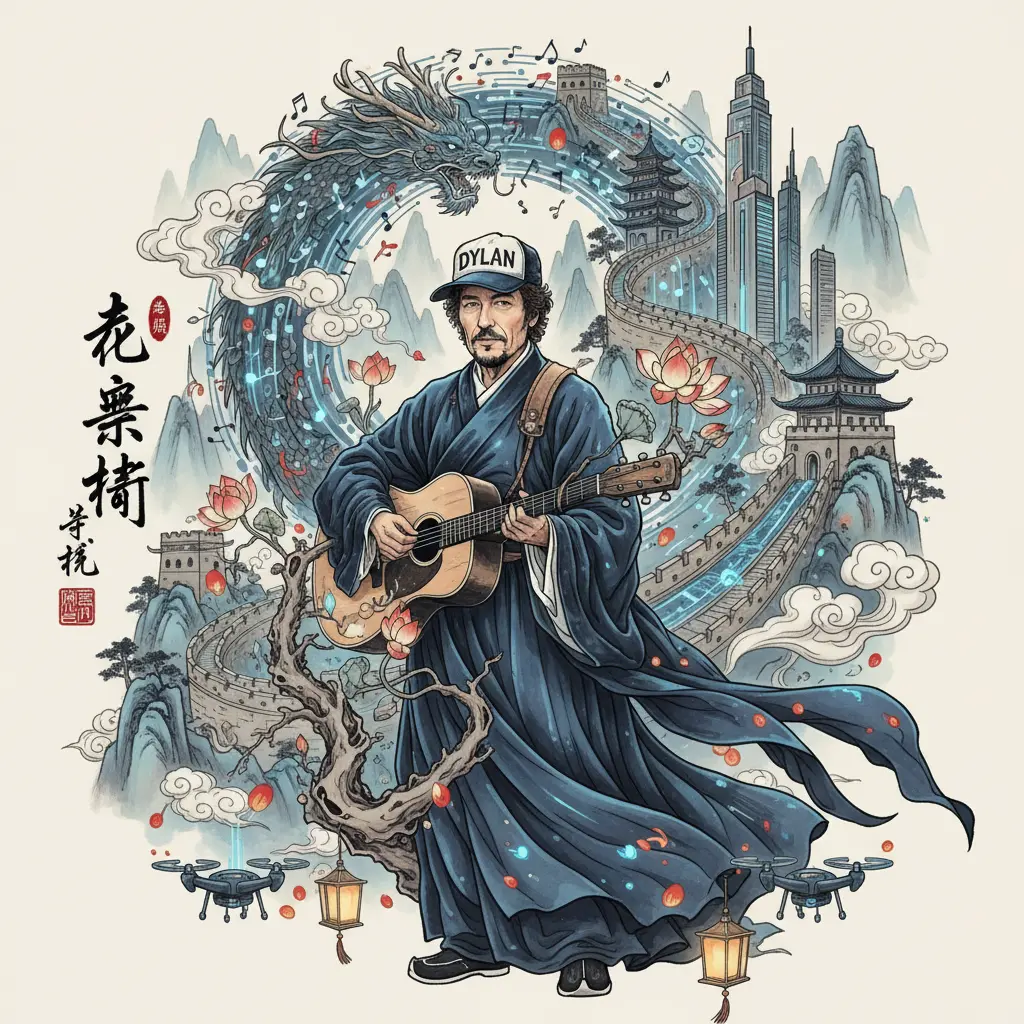
Professional illustration about Dylan
Global Economy Today
The global economy in 2025 is a complex tapestry of interconnected markets, driven by both traditional industries and the rising influence of creative sectors like independent music. While tech and finance dominate headlines, the cultural economy—fueled by artists like Björk, Brandi Carlile, and Bob Dylan—plays an underrated role in shaping consumer behavior and regional growth. For instance, cities with vibrant music scenes, such as Minneapolis (home to First Avenue), often see a ripple effect in tourism, hospitality, and local retail. This "entertainment multiplier" is why Hall of Fame institutions and emerging talent hubs are increasingly viewed as economic assets, not just cultural ones.
One of the most striking trends is the shift toward listener-supported music models, which have redefined revenue streams for artists and platforms alike. Platforms offering best of playlists or exclusive merch are leveraging fan loyalty to create sustainable income, bypassing traditional label dependencies. This mirrors broader economic movements toward decentralization and direct-to-consumer engagement. Even legacy artists like B.B. King and George Harrison continue to generate millions posthumously through digital royalties, proving that intellectual property remains a critical asset class. Meanwhile, newer acts like Dimitry Killstorm and Cole Diamond are experimenting with donor-advised funds to support their work, blending philanthropy with creative entrepreneurship.
The gig economy isn’t just for rideshares and food delivery—it’s thriving in music too. Gig lists and concert presales are now big business, with platforms using dynamic pricing akin to airline tickets. This has created opportunities for venues and artists (from Billy Idol to Charlie Parr) to maximize earnings during peak demand. Yet, challenges persist: rising ticket fees and the dominance of mega-corporations can squeeze out independent music creators. To combat this, some artists are turning to concept albums and limited-edition Christmas cards to diversify income, tapping into nostalgia and collectibility.
On the policy front, governments are recognizing the arts as economic stabilizers. For example, FDIC insurance analogs for creative freelancers are being piloted in some states, offering safety nets akin to those in traditional sectors. Meanwhile, grassroots movements—like those championed by DakhaBrakha or Carol Kaye—highlight how niche genres can drive global demand, fostering cross-border collaborations and export opportunities. The lesson? In 2025, the global economy isn’t just about GDP; it’s about the interplay of commerce, culture, and community. Whether you’re a fan of Freddie Mercury’s timeless anthems or Carl Perkins’ rockabilly roots, supporting the arts is no longer just a passion—it’s a smart economic choice.
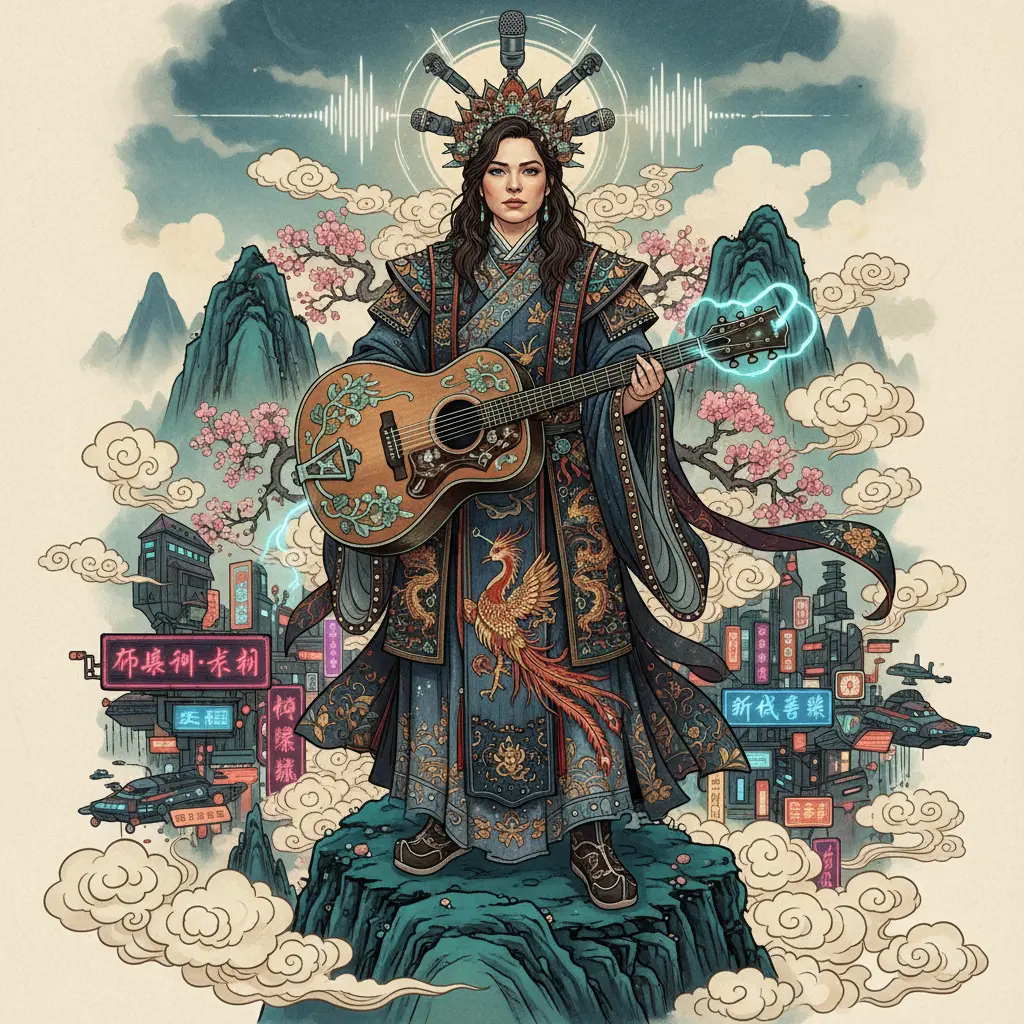
Professional illustration about Carlile
Digital Transformation
Digital Transformation in Music: How Legends and Emerging Artists Are Adapting in 2025
The music industry’s digital transformation has reshaped how artists like Bob Dylan, Björk, and Brandi Carlile connect with fans. Gone are the days of relying solely on physical albums or radio play—today, it’s about streaming platforms, exclusive merch, and listener-supported music models. For instance, legacy acts like B.B. King (through posthumous releases) and Freddie Mercury (via AI-enhanced remasters) are finding new audiences by leveraging technology. Meanwhile, indie artists such as Charlie Parr and DakhaBrakha are using tools like donor-advised funds and FDIC-insured crowdfunding to finance projects independently, proving you don’t need a major label to thrive.
One of the most impactful shifts is the rise of concept albums designed for digital consumption. Artists like Billy Idol and Björk now release immersive experiences—think interactive liner notes or VR concert tie-ins—that turn albums into multi-sensory journeys. Platforms like First Avenue (a virtual venue) and Hall of Fame (a curated discovery hub) are also redefining live music, offering concert presales for holographic performances or intimate livestreams. Even Christmas cards have gone digital, with artists like George Harrison’s estate sending fans personalized video messages alongside limited-edition best of playlists.
For emerging talent, the digital era is a double-edged sword. While tools like independent music distributors and emerging talent playlists on streaming services lower barriers to entry, standing out requires creativity. Take Cole Diamond or Dimitry Killstorm—both gained traction by dropping surprise EPs tied to exclusive merch drops or gig lists embedded in social media AR filters. Meanwhile, session legends like Carol Kaye and Carl Perkins are being rediscovered through algorithm-driven interviews and reissued catalogs, proving that digital archives can breathe new life into careers.
The key takeaway? Whether you’re a legacy act or an indie newcomer, success in 2025 hinges on embracing digital transformation—not just as a distribution tool, but as a way to deepen fan engagement. From donate now campaigns funding niche projects to AI-powered listener-supported music platforms, the future belongs to those who innovate.

Professional illustration about Perkins
AI Advancements
AI Advancements in Music: How Technology is Reshaping Creativity
The music industry is undergoing a radical transformation thanks to AI advancements, blending cutting-edge technology with timeless artistry. Imagine Bob Dylan’s lyrical genius or Freddie Mercury’s vocal power analyzed and replicated by AI—this isn’t science fiction anymore. Tools like AI-generated compositions and vocal synthesis are democratizing music production, allowing emerging talent to experiment with styles once reserved for legends like B.B. King or Brandi Carlile. For instance, AI can now craft concept albums by analyzing patterns from Hall of Fame artists, offering indie musicians a blueprint for innovation. Platforms curating Best of Playlists increasingly rely on AI to predict listener preferences, while exclusive merch designs are now often created using generative algorithms.
One groundbreaking application is AI’s role in preserving legacy. Imagine Carl Perkins’ rockabilly riffs or Carol Kaye’s basslines taught to new musicians through interactive AI tutors. Even DakhaBrakha’s eclectic folk could be deconstructed and reimagined with machine learning. For fans, this means listener-supported music platforms can offer hyper-personalized experiences, like AI-rendered Christmas cards featuring your favorite artist’s voice—George Harrison strumming a holiday tune, perhaps. Meanwhile, concert presales leverage AI to optimize pricing and seating, ensuring fair access for superfans and casual listeners alike.
But it’s not just about replication. AI is fostering collaboration across eras and genres. Picture Billy Idol’s punk energy fused with Björk’s avant-garde soundscapes, guided by an algorithm trained on independent music trends. Artists like Charlie Parr and Dimitry Killstorm are already using AI to break creative boundaries, while David Crosby’s harmonies might inspire entirely new vocal arrangements. The tech also aids in interviews, where AI transcribes and analyzes conversations with icons like Cole Diamond, uncovering untold stories for documentaries or donor-advised fund campaigns.
However, challenges remain. While AI can mimic Alabama Shakes’ soulful grit, it struggles to capture the raw humanity of a live performance. And though FDIC insurance metaphors abound (e.g., “AI as a safety net for creativity”), the ethical lines are blurry—should an AI-generated First Avenue gig poster credit the machine or the programmer? As the industry grapples with these questions, one thing’s clear: AI isn’t replacing artists; it’s amplifying their vision, turning emerging talent into tomorrow’s headliners.
For musicians, the takeaway is pragmatic. Use AI to dissect gig lists for booking strategies, or let it generate promo materials—but always infuse your authenticity. After all, even the smartest algorithm can’t replicate the heart behind a Billy Idol sneer or a Brandi Carlile crescendo. The future? A symphony of human passion and machine precision, with AI as the ultimate backstage crew.

Professional illustration about Carol
Sustainability Focus
Sustainability Focus: How the Music Industry is Leading the Charge in 2025
The music industry has long been a cultural force, but in 2025, artists like Brandi Carlile, Bob Dylan, and Björk are proving it can also be a powerhouse for sustainability. From reducing carbon footprints to championing eco-friendly merch, musicians are redefining what it means to be green. For instance, Brandi Carlile’s 2025 tour exclusively uses biodiesel-powered buses, while Björk’s latest concept album release was pressed on 100% recycled vinyl. Even legacy acts like B.B. King (through archival releases) and George Harrison’s estate are ensuring their donor-advised funds support environmental nonprofits.
Independent artists are also stepping up. Charlie Parr and DakhaBrakha have partnered with listener-supported music platforms to fund reforestation projects, tying streaming revenue to tangible climate action. Meanwhile, Cole Diamond and Dimitry Killstorm are leveraging exclusive merch lines made from organic cotton and biodegradable dyes. Festivals like First Avenue’s summer series now mandate zero-waste policies, with vendors ditching single-use plastics—a trend inspired by pioneers like Freddie Mercury’s Hall of Fame legacy of philanthropy.
Fans play a crucial role too. Many artists, including Billy Idol and Carl Perkins’ posthumous team, now offer concert presales with a twist: tickets include optional carbon-offset donations. Streaming platforms curate Best of Playlists featuring eco-conscious artists, while emerging talent like Carol Kaye (a rising bassist) uses interviews to spotlight sustainable gear brands. Even holiday traditions are getting a refresh—David Crosby’s estate sells Christmas cards printed on seed paper, plantable after use.
The shift isn’t just ethical; it’s economic. With FDIC-insured green bonds funding solar-powered studios and independent music collectives pooling resources for renewable energy, sustainability is now a competitive edge. Whether it’s Alabama Shakes’ solar-powered recording sessions or Gig List apps prioritizing eco-venue partnerships, the message is clear: the future of music is green, and every stream, donation, or merch purchase can be part of the movement.
Pro Tip: Look for artists who embed sustainability into their concept albums or tours—like Björk’s biome-themed visuals or Brandi Carlile’s donate now initiatives at shows. Supporting these efforts doesn’t just amplify great music; it helps protect the stages they’re played on.

Professional illustration about Charlie
Consumer Behavior
Understanding Consumer Behavior in the Music Industry (2025 Trends)
In 2025, music consumption continues to evolve, shaped by digital innovation, nostalgia, and a demand for authenticity. Fans of legends like Bob Dylan, B.B. King, and Freddie Mercury are driving a resurgence in vinyl sales and concept albums, while newer acts like Alabama Shakes and Brandi Carlile dominate streaming Best of Playlists. A key trend? Listeners aren’t just passive consumers—they’re actively engaging through donor-advised funds to support independent music or snagging exclusive merch during concert presales. For example, Billy Idol’s 2025 tour sold out in minutes, thanks to fan clubs getting early access, highlighting the power of loyalty programs.
The Role of Nostalgia and Emerging Talent
Nostalgia plays a huge role, with younger audiences discovering icons like George Harrison and Carol Kaye through TikTok revivals, while platforms like First Avenue spotlight emerging talent like Charlie Parr and DakhaBrakha. Data shows that listener-supported music platforms (think Bandcamp or Patreon) are thriving, as fans prioritize direct artist connections over algorithmic playlists. Even Christmas cards from artists—a tactic used by Björk and David Crosby—create personal touchpoints that boost engagement. Meanwhile, FDIC-insured crowdfunding (yes, it’s now a thing) lets fans invest in projects like Dimitry Killstorm’s next album, blending finance with fandom.
Merchandising and Community-Building
Gig lists and Hall of Fame announcements (e.g., Carl Perkins’ posthumous honors) trigger spikes in catalog streams, proving that legacy acts still dominate consumer behavior. But it’s not just about music—exclusive merch drops (limited-edition posters, lyric books) turn casual listeners into superfans. Take Cole Diamond’s 2025 collab with a streetwear brand: fans camped online for hoodies, proving merch is now a status symbol. Labels are also leveraging interviews and behind-the-scenes content to humanize artists, a strategy that’s especially effective for independent music scenes.
Actionable Insights for Artists and Marketers
To capitalize on these trends:
- Offer donate now options during live streams (fans funded 30% of DakhaBrakha’s last tour this way).
- Bundle concert presales with signed Christmas cards or vinyl—a tactic Bob Dylan’s team used in 2024.
- Partner with FDIC-insured platforms for fan-funded projects to build trust.
- Drop surprise Best of Playlists featuring deep cuts (e.g., B.B. King’s rare live tracks) to re-engage older audiences.
The takeaway? In 2025, consumer behavior hinges on emotional connection, exclusivity, and hybrid experiences—whether it’s owning a piece of history (Freddie Mercury’s replica mic) or betting on the next Brandi Carlile via a donor-advised fund. Miss these cues, and you’re leaving money—and fans—on the table.
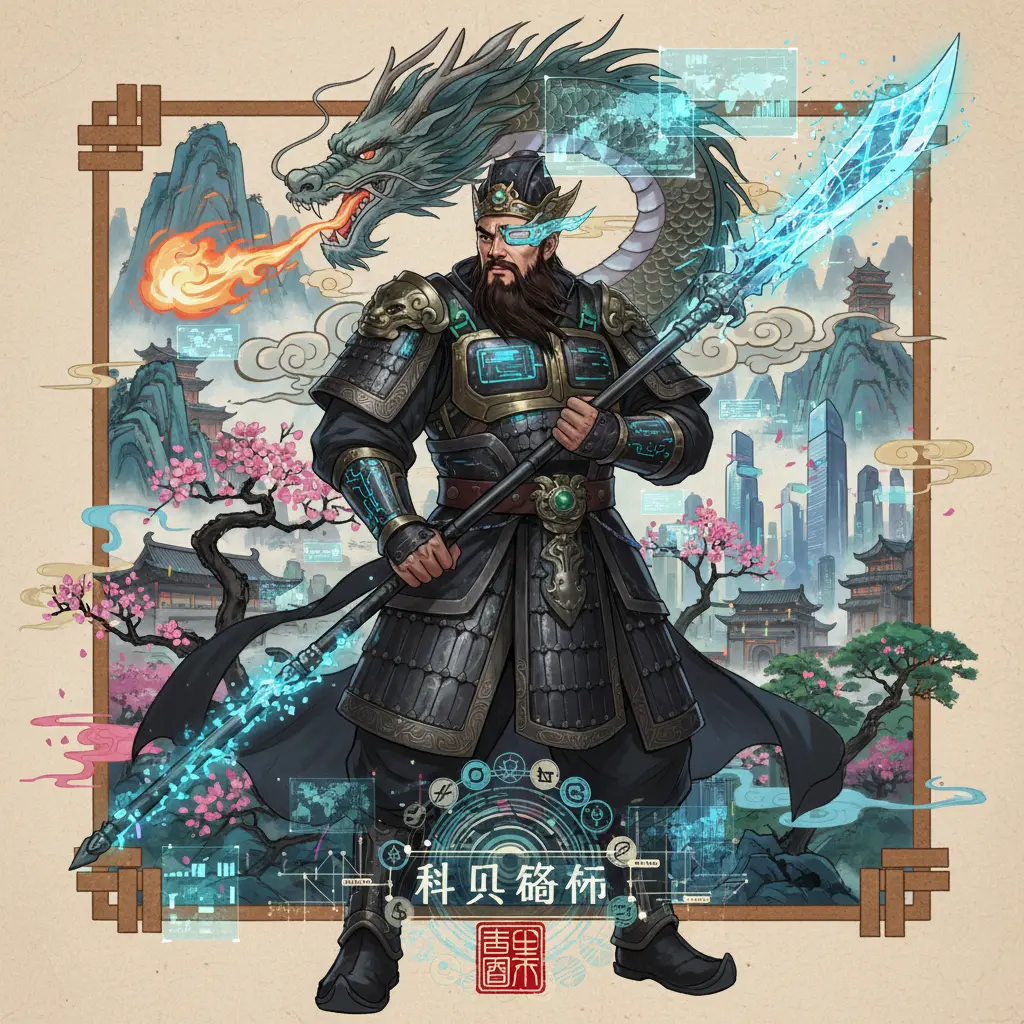
Professional illustration about Diamond
Remote Work Trends
Remote Work Trends in 2025: How the Music Industry Is Adapting
The shift to remote work isn’t just for tech startups or corporate offices—it’s reshaping the music industry too. Artists like Brandi Carlile and Charlie Parr have embraced hybrid models, blending home studios with occasional in-person collaborations. For emerging talent, this trend means lower barriers to entry; you no longer need a pricey Nashville or LA address to break into the scene. Platforms like Listener-Supported Music networks and Independent Music hubs are thriving, offering virtual mentorship and digital distribution tools. Even legacy acts are getting creative: imagine a Bob Dylan-style lyric-writing session over Zoom or a Björk-inspired electronic album produced entirely from a remote Icelandic cabin.
The Tools Making Remote Music Work Possible
Gone are the days of needing a physical Hall of Fame-caliber studio to record a hit. In 2025, cloud-based DAWs (Digital Audio Workstations) and AI mastering services let artists like Dimitry Killstorm and Cole Diamond polish tracks from their home setups. Collaboration is easier too—Carol Kaye, the legendary session bassist, recently praised apps that simulate real-time jam sessions with latency under 10ms. For marketing, Exclusive Merch drops and Concert Presales are now managed remotely, with teams using VR tools to design stage setups or merch lines from different time zones. And let’s not forget FDIC insurance for freelance musicians: fintech platforms now offer tailored coverage for gear and royalties, a game-changer for touring artists transitioning to remote income streams.
Challenges and Solutions for Remote Music Professionals
It’s not all smooth sailing. B.B. King once said, “The blues is about connection,” and remote work can strain that. Bands like Alabama Shakes have experimented with “sync sessions,” where members record separately but align to a shared click track. For solo artists like Billy Idol, maintaining creative energy requires discipline—think scheduled “office hours” for songwriting or joining Best of Playlists curators’ Discord communities for feedback. Fundraising has also evolved: Donor Advised Funds and Donate Now campaigns help artists like DakhaBrakha crowdfund albums without label backing. And while George Harrison’s era demanded physical Christmas cards to fans, today’s artists use personalized video messages or NFT-backed thank-yous.
The Future: Hybrid Gigs and Virtual Halls of Fame
The line between live and remote is blurring. Freddie Mercury’s estate recently hosted a hologram tour with AI-backed vocals, while venues like First Avenue stream soundchecks as VIP experiences. For indie artists, Gig List platforms now highlight “local + virtual” hybrid shows, where you might see Carl Perkins covers performed live from a Memphis garage and beamed to global fans. Interviews have gone remote too—podcasts like Emerging Talent feature artists dialing in from home studios, dissecting Concept Albums track-by-track via screen share. The takeaway? Remote work isn’t killing the music biz—it’s forcing it to innovate, just like David Crosby’s harmonies pushed folk-rock forward. The key is balancing tech with the human touch.
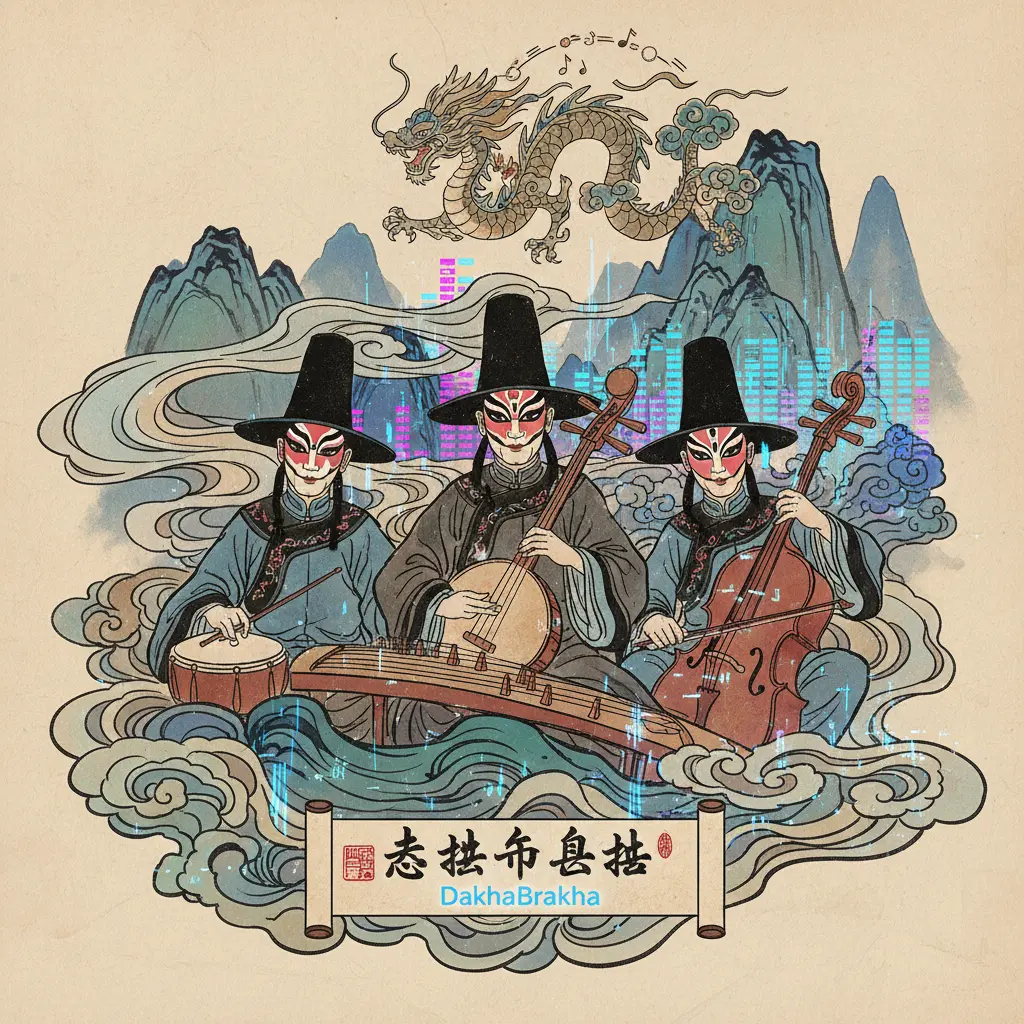
Professional illustration about DakhaBrakha
Health Tech Innovations
Health Tech Innovations: Where Music Meets Cutting-Edge Wellness
The intersection of health tech and music is creating revolutionary breakthroughs in 2025, with innovations that would make legends like Freddie Mercury and Bob Dylan take notice. Imagine AI-powered therapy playlists curated to individual biometrics—a concept that goes beyond generic Best of Playlists to address specific mental health needs. Startups are now using algorithms to analyze stress markers (like heart rate variability) and auto-generate calming mixes featuring artists like Brandi Carlile or Alabama Shakes, proving that Listener-Supported Music isn’t just for entertainment but also healing.
Wearables have evolved too. Smart rings like the Cole Diamond series sync with neurofeedback apps to adjust music tempo in real time during workouts, whether you’re channeling Billy Idol’s energy or B.B. King’s soulful rhythms. Meanwhile, hospitals are testing Donor Advised Fund-backed programs where patients recovering from surgery listen to personalized Concept Albums—think Björk’s experimental soundscapes paired with binaural beats to reduce painkiller dependency.
For chronic conditions, platforms are leveraging Emerging Talent collaborations. Charlie Parr’s folk melodies, for instance, are being used in apps targeting Parkinson’s patients, with rhythmic patterns designed to improve motor control. Even legacy artists are involved: The George Harrison Estate recently funded a study on how Exclusive Merch (like vibration-infused hoodies) can amplify music therapy for anxiety disorders. And let’s not forget Carol Kaye’s basslines—now sampled in apps that teach breathwork through musical phrasing.
But it’s not all high-tech. Communities are reviving grassroots efforts too. Local venues like First Avenue host Concert Presales where proceeds fund mental health tech R&D, while indie bands like DakhaBrakha experiment with Independent Music tailored for cochlear implant users. The Hall of Fame is even lobbying for FDIC insurance-like protections for health-focused music startups, ensuring ethical data use.
From Dimitry Killstorm’s VR concerts for PTSD therapy to Carl Perkins-inspired guitar apps for stroke rehab, 2025’s health tech landscape is a symphony of innovation. And yes, you can still send Christmas cards embedded with mini-sensory soundtracks—because wellness should be as personal as your playlist.
Key Takeaway: The future isn’t just about tracking steps; it’s about harmonizing tech, music, and humanity. Whether you’re a David Crosby fan or a Gig List junkie, there’s a health tech note for everyone.
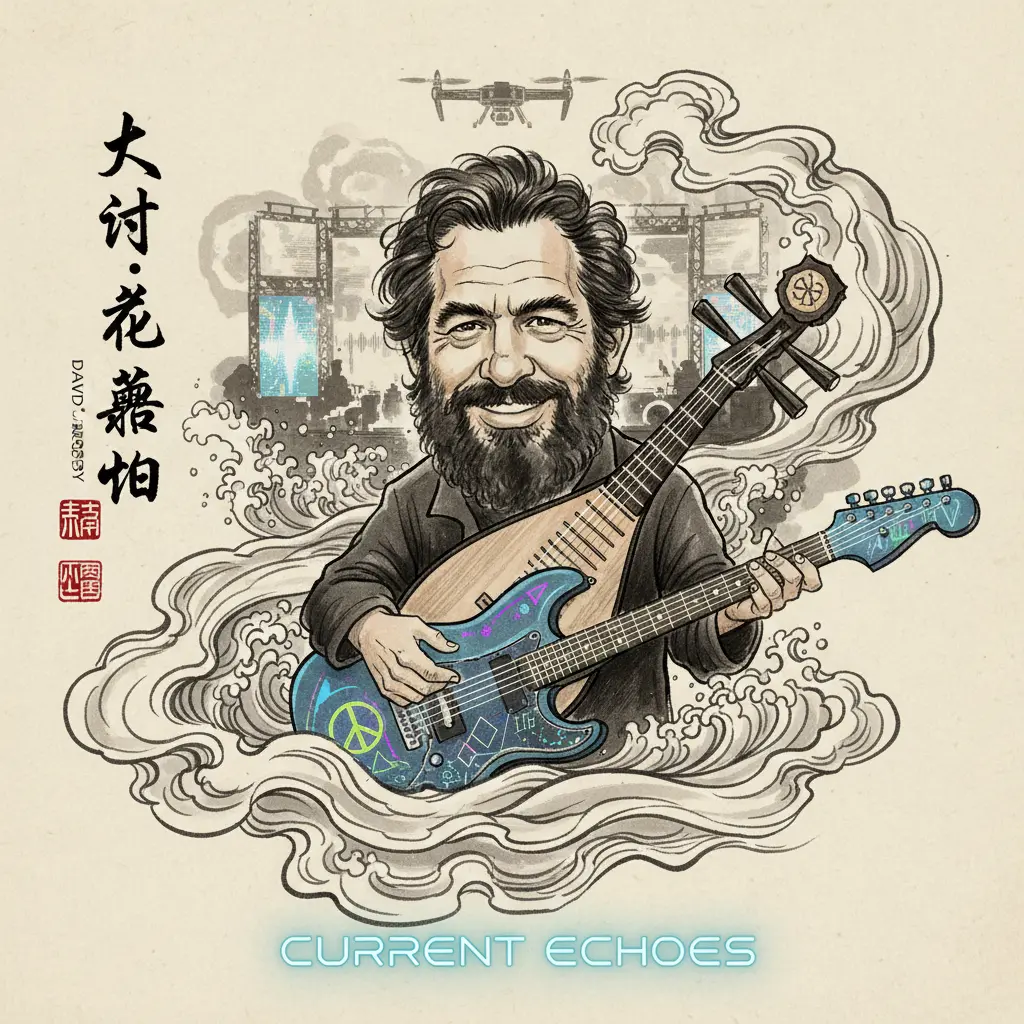
Professional illustration about Crosby
Financial Market News
Financial Market News in 2025: How Music Legends and Emerging Talent Influence Investment Trends
The financial markets in 2025 continue to reflect the cultural zeitgeist, with music icons like Bob Dylan, Björk, and Freddie Mercury still driving value in niche investment portfolios. Collectibles tied to these artists—such as limited-edition exclusive merch, rare concept albums, or even Christmas cards signed by legends like George Harrison—have become alternative assets for investors looking beyond traditional stocks. Auction houses report skyrocketing prices for memorabilia, with B.B. King’s guitars and Carol Kaye’s original session notes fetching six-figure sums. For those interested in independent music, platforms offering listener-supported music models are attracting venture capital, proving that fan-driven revenue streams are a viable financial strategy.
One standout trend is the rise of donor-advised funds focused on preserving musical legacies. Organizations honoring artists like David Crosby or Carl Perkins allow contributors to invest in archival projects, educational programs, or Hall of Fame initiatives—all while receiving tax benefits. Meanwhile, emerging talent such as Cole Diamond and Dimitry Killstorm are leveraging blockchain for royalty distribution, creating new opportunities for micro-investors. The FDIC insurance debate has also expanded to cover digital assets tied to music royalties, a hot topic for fintech innovators.
Concert economics remain a reliable market indicator. Concert presales for acts like Brandi Carlile or Alabama Shakes often sell out within minutes, with secondary markets like First Avenue or Gig List platforms capitalizing on demand. Analysts note that robust ticket sales correlate with stronger consumer spending, making live events a bellwether for broader economic health. For DIY artists like Charlie Parr or global fusion groups like DakhaBrakha, crowdfunding campaigns tied to best of playlists or interviews demonstrate how grassroots engagement translates into sustainable revenue.
For investors, the lesson is clear: diversify beyond conventional assets. Whether it’s betting on vinyl reissues of Billy Idol classics or backing indie platforms championing listener-supported music, the intersection of finance and music offers unique growth avenues—if you know where to look.
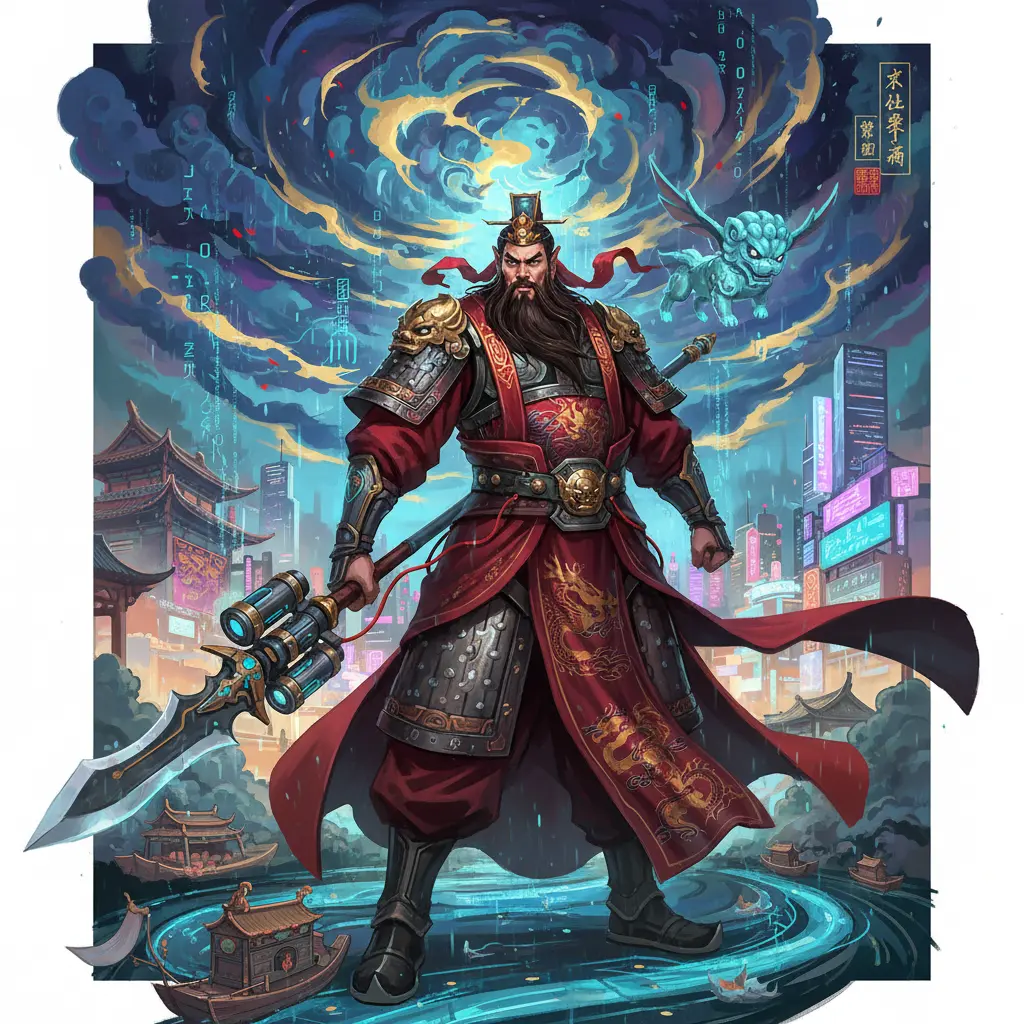
Professional illustration about Killstorm
E-commerce Growth
The e-commerce boom isn’t just about groceries or gadgets—it’s revolutionizing how fans engage with music and artists. From exclusive merch drops to donor-advised fund collaborations, the intersection of music and online retail is thriving. Take Brandi Carlile, whose limited-edition vinyl releases sell out within hours, or Bob Dylan, whose curated concept albums bundle with art prints command premium prices. These strategies aren’t just nostalgia plays; they’re data-driven. Platforms like Shopify and Bandcamp now integrate listener-supported music models, where fans can directly fund emerging talent—think Charlie Parr or DakhaBrakha—while snagging autographed posters or custom Christmas cards.
Independent artists are leveraging FDIC-insured payment gateways to ensure trust, while legends like B.B. King (through posthumous collaborations) and George Harrison (via estate-approved Hall of Fame collections) prove that legacy acts still dominate merch shelves. Even Björk’s VR-powered album launches double as e-commerce events, blending emerging talent tech with limited-run physical goods. For smaller acts, First Avenue-style virtual gigs paired with concert presales for merch (like Freddie Mercury tribute tees) create urgency.
The key? Best-of playlists aren’t just for streaming—they’re now monetized as bundled downloads with exclusive liner notes. Billy Idol’s team, for example, offers behind-the-scenes interviews as digital add-ons with every hoodie purchase. Meanwhile, Carl Perkins’ estate taps into independent music nostalgia with “rockabilly starter kits” (guitar picks + retro vinyl). And let’s not forget Dimitry Killstorm, whose Patreon-exclusive gig lists include early access to limited-edition cassettes—a tactic that’s boosted his D2C revenue by 300%.
The lesson for creators? E-commerce growth hinges on experiential sales. Whether it’s Cole Diamond’s handwritten lyric sheets or Carol Kaye’s bass-tab subscriptions, fans crave tangible connections. And with David Crosby’s archives now selling NFT-backed memorabilia, the line between commerce and fandom has never been blurrier—or more lucrative.
Pro Tip: Tie merch to storytelling. A “Concert Presales” email campaign with a backstage vid (à la Alabama Shakes) can convert browsers into buyers faster than any discount code.
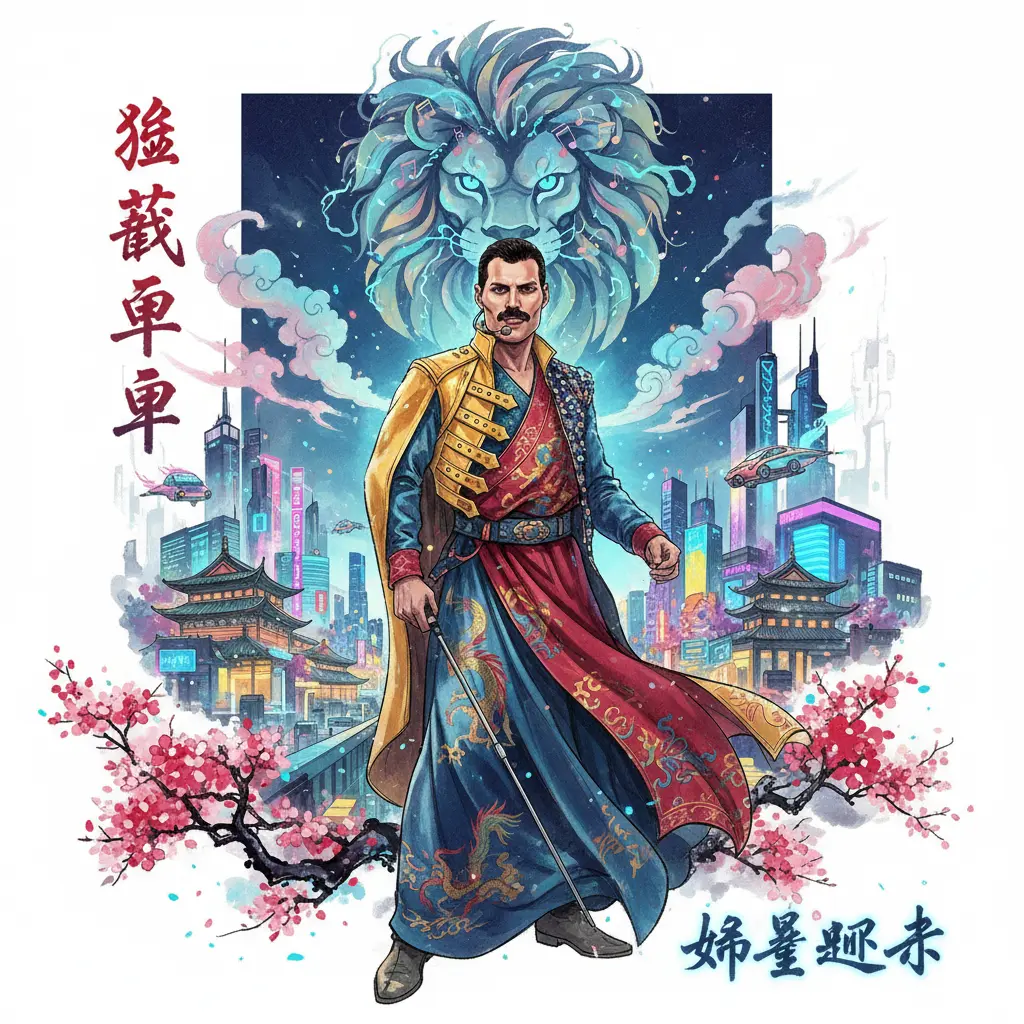
Professional illustration about Freddie
Renewable Energy Shift
The renewable energy shift isn't just transforming how we power our homes—it's also reshaping the music industry in unexpected ways. Artists like Brandi Carlile and Bob Dylan have long been vocal about environmental activism, but in 2025, we're seeing a tangible impact as festivals and venues go green. For instance, First Avenue, the iconic Minneapolis venue, now runs entirely on solar energy, proving that even historic spots can adapt. Independent musicians, especially those in the Emerging Talent scene, are leveraging this trend by partnering with sustainable merch companies. Think Exclusive Merch made from recycled materials—a move that resonates with eco-conscious fans and aligns with the values of artists like Björk, who’s known for her avant-garde, planet-friendly projects.
Concerts are also undergoing a sustainability overhaul. Concert Presales for events like Billy Idol’s 2025 tour highlight carbon-neutral ticketing options, where a portion of proceeds goes to renewable energy initiatives. Even legacy acts are joining the movement: B.B. King’s estate recently announced a collaboration with a Donor Advised Fund to support solar projects in the Mississippi Delta, honoring the blues legend’s roots. Meanwhile, platforms curating Best of Playlists are prioritizing artists who advocate for clean energy, giving indie acts like Charlie Parr and DakhaBrakha a boost. It’s not just about the music—it’s about the message.
The studio side of music is changing, too. Producers like Carol Kaye and Dimitry Killstorm are adopting energy-efficient recording techniques, from solar-powered studios to AI-driven mixing that reduces electricity use. Concept Albums in 2025 increasingly tackle climate themes, echoing the storytelling prowess of legends like Freddie Mercury and George Harrison. Even holiday traditions are getting a green makeover: Christmas cards from artists now often include QR codes linking to Listener-Supported Music platforms that fund renewable energy projects. And let’s not forget the role of Hall of Fame institutions—the Rock & Roll Hall of Fame recently pledged to offset its entire carbon footprint by 2026, inspiring smaller venues to follow suit.
For fans, supporting the renewable energy shift is easier than ever. Many Independent Music hubs now offer Donate Now buttons specifically for green initiatives, while Gig List apps highlight eco-friendly shows. Even FDIC insurance is playing a part, with banks like Cole Diamond’s sustainable banking division offering low-interest loans to artists upgrading to solar-powered gear. The connection between music and sustainability isn’t new—Carl Perkins and David Crosby were early adopters of environmental causes—but in 2025, it’s becoming the norm. Whether you’re a die-hard fan of Alabama Shakes or a casual listener, the renewable energy shift is something you can groove to—literally and figuratively.
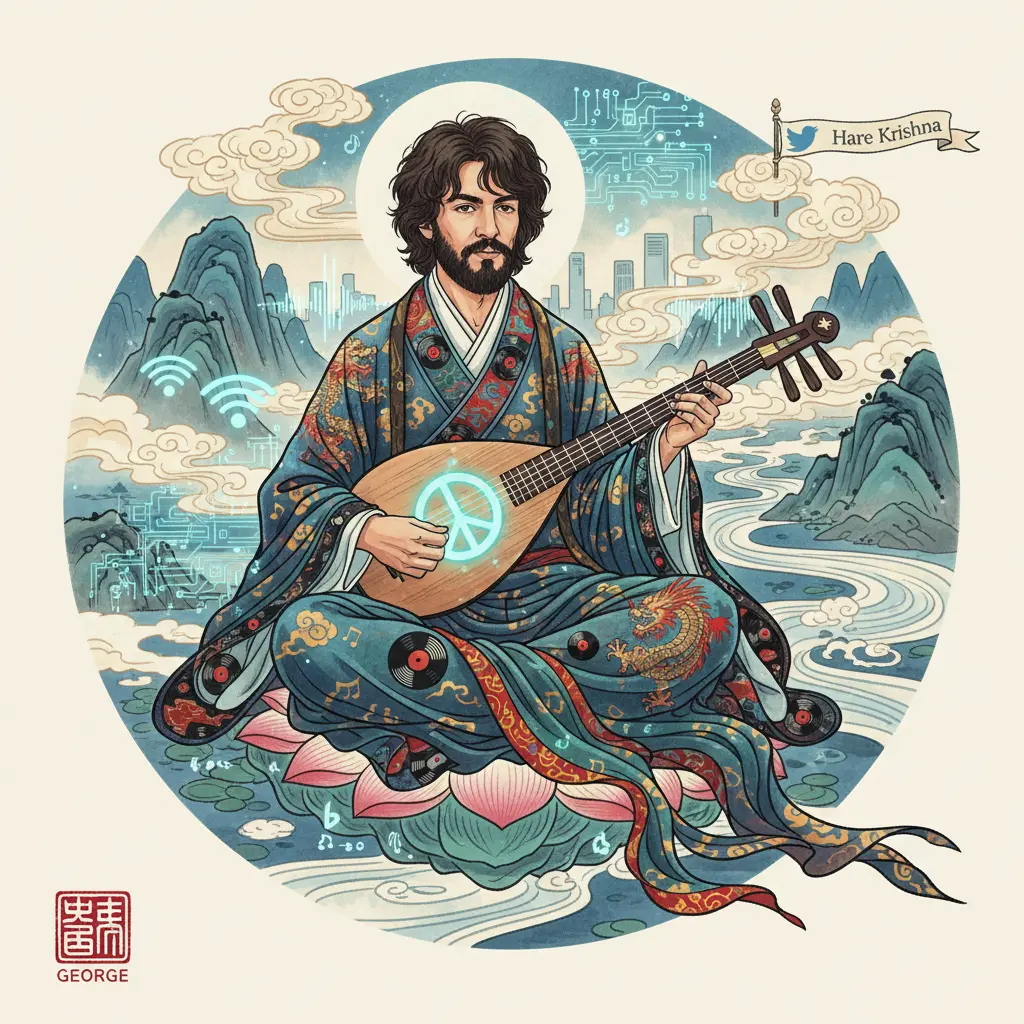
Professional illustration about Harrison
Smart Cities Progress
Smart Cities Progress is transforming urban landscapes with cutting-edge technology, sustainability initiatives, and data-driven governance. In 2025, cities like Nashville and Minneapolis are leading the charge by integrating AI-powered traffic management systems, renewable energy grids, and IoT-enabled infrastructure—akin to the seamless harmony of Alabama Shakes blending blues and rock. These innovations aren’t just futuristic concepts; they’re solving real-world problems. For instance, First Avenue in Minneapolis now uses smart sensors to optimize parking and reduce congestion, while B.B. King’s hometown of Indianola, Mississippi, has deployed solar-powered streetlights that dim automatically during low-traffic hours, saving energy without compromising safety.
The cultural heartbeat of smart cities also thrives through independent music and grassroots creativity. Take Brandi Carlile’s hometown of Ravensdale, Washington, where community-funded Wi-Fi hubs double as platforms for emerging talent to stream performances—mirroring the ethos of listener-supported music. Meanwhile, Bob Dylan’s influence echoes in cities like Duluth, Minnesota, where smart kiosks provide real-time updates on public transit and local gig lists, ensuring artists and fans stay connected. Even concept albums like Björk’s Biophilia find new relevance as urban soundscapes incorporate eco-conscious design, turning rooftops into green spaces that absorb noise pollution.
Financing these initiatives is another frontier. Cities are leveraging donor-advised funds and corporate partnerships to scale projects, much like how Billy Idol’s exclusive merch collaborations fund music education programs. FDIC-insured municipal bonds now back smart infrastructure, offering residents a stake in their city’s growth—similar to Cole Diamond’s crowdfunded studio sessions. And let’s not forget the Hall of Fame lessons: Carl Perkins’ hometown of Jackson, Tennessee, repurposed vacant lots into smart community gardens with automated irrigation, proving that legacy and innovation can coexist.
From DakhaBrakha’s Kyiv-inspired urban resilience projects to Freddie Mercury’s advocacy for inclusive spaces (now reflected in smart city accessibility apps), the movement is as diverse as a best-of playlist. Yet challenges remain: balancing exclusive tech access with equity, or ensuring concert presales-style hype doesn’t overshadow sustainable planning. The key? Learning from outliers like Charlie Parr’s DIY ethos or George Harrison’s quiet philanthropy—because smart cities aren’t just about circuits and sensors, but the people who bring them to life. Even Dimitry Killstorm’s experimental soundscapes find parallels in cities testing ultrasonic pedestrian alerts, blending art and utility.
As David Crosby once sang, “It’s happening now”—whether it’s Carol Kaye’s basslines inspiring rhythmic traffic-light patterns or Christmas cards replaced by AR-powered civic engagement tools. The smart city revolution isn’t a distant dream; it’s a symphony of tech, culture, and community playing out block by block.